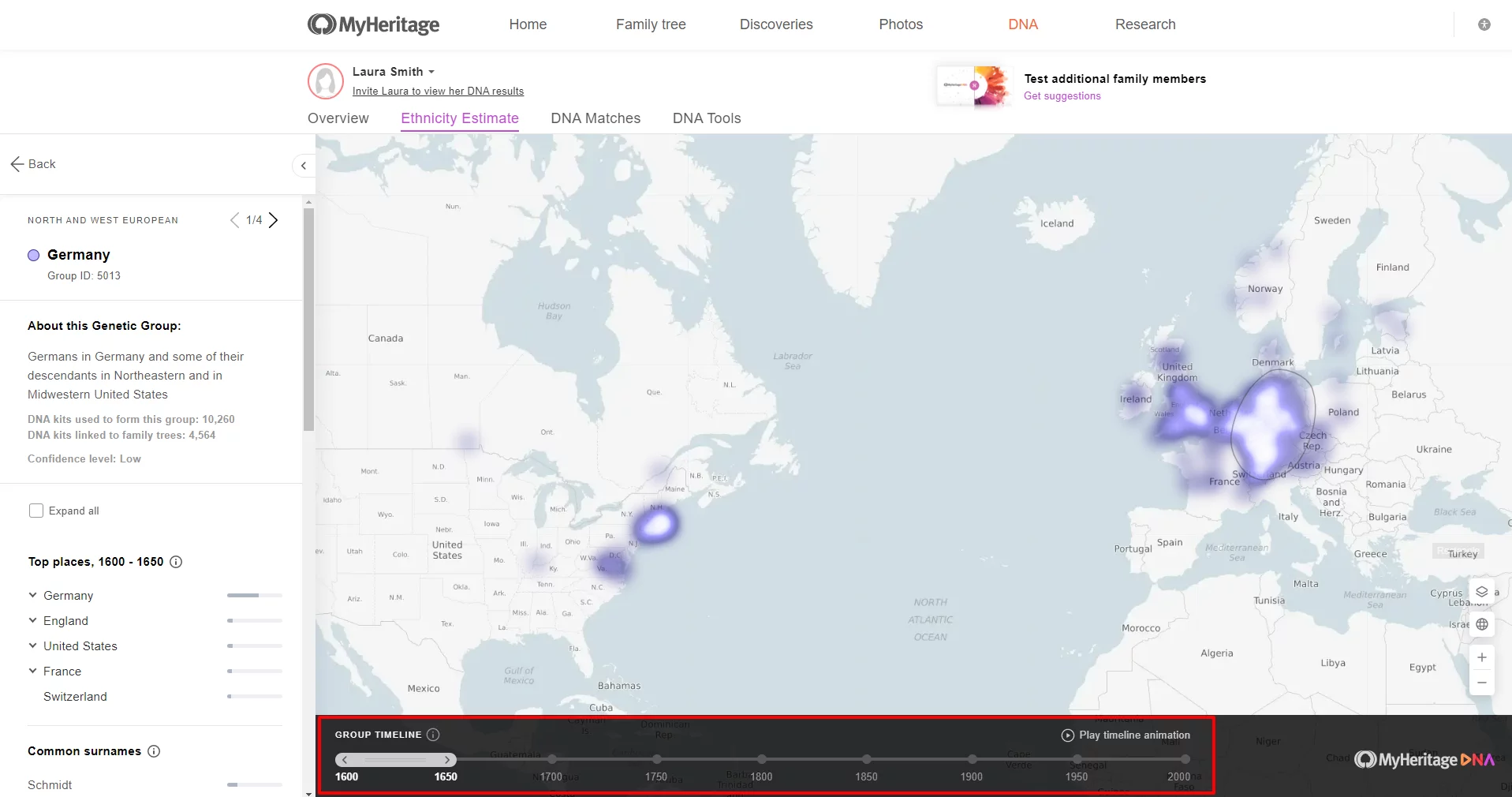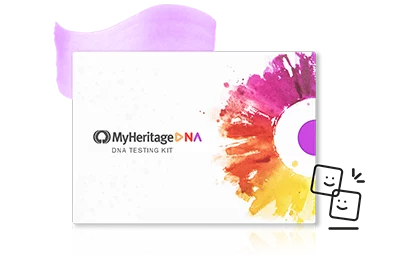
After you receive your DNA Ethnicity Estimate from MyHeritage, you may wonder: how far back do these results go? And how reliable are they?
In this article we’ll discuss what those ethnicity reports really tell you about where your ancestors were from.
How far back does the Ethnicity Estimate go?
Ethnicity Estimates are calculated based on founder populations that can trace their roots to a specific place or ethnic group going back 6–15 generations, or roughly 100–400 years ago. You can learn more about how MyHeritage estimates ethnicities based on DNA in the following article: What Is My Ethnicity? How MyHeritage Estimates Ethnicities
When you review your Genetic Groups, you may notice that the Group Timeline below the map goes back to the year 1600. The heatmap indicates the concentrations of people belonging to this group around the year 1600, showing you where your ancestors likely lived around 400 years ago.

Why does MyHeritage not provide haplogroups?
The MyHeritage DNA test is an autosomal test, and haplogroups can only be identified through mitochondrial DNA (mtDNA) and Y-chromosome (Y-DNA) tests. Haplogroups are combinations of unique genetic sequences that tend to be inherited together from a single parent. Because mtDNA and Y-DNA are both inherited more or less intact from the maternal or paternal line, these sequences, or haplotypes, are also passed down more or less unchanged from mother to child (in the case of mtDNA) or father to son (in the case of Y-DNA). That’s why haplogroups can give you information going back hundreds of thousands of years.
Autosomal DNA, by contrast, is inherited in random combinations from both parents, which means the DNA from a specific ancestor will become mixed and “watered down” from generation to generation. So instead of comparing your DNA to that of a single common ancestor, the autosomal ethnicity estimate compares your DNA to that of a founder population: a group of people who have proven ancestry going back at least 6 generations in a given region or ethnic group. Your Ethnicity Estimate is based on how much your DNA is similar to the DNA of the people in those groups.
While haplogroups can potentially take you back much further than autosomal DNA results, they can only tell you where one specific line of ancestors was from. If your goal is to achieve a broader understanding of your heritage and your unique mix of origins from both sides of your family, an autosomal DNA test like the MyHeritage test will provide more relevant information. Furthermore, DNA ethnicity results are most reliable when combined with genealogical information, and autosomal DNA tests are the best kind of test for genealogical research — as we’ll explain below.
Are MyHeritage DNA test results reliable?
The MyHeritage DNA test is extremely accurate and reliable for identifying DNA Matches. The Ethnicity Estimate provides very accurate results for most people, but it’s still just an estimate and must be taken in context and with its inherent limitations in mind.
Ultimately, the most accurate way to identify your origins is through solid genealogical research — and DNA Matching is more important than the Ethnicity Estimate in helping you with that. DNA Matching helps you confirm relationships with relatives you know and find relatives you may not have met before. So for example, let’s say your Ethnicity Estimate says you are 15% Scandinavian and you never heard of any Scandinavian ancestors. Through DNA Matching, you might be able to find a second cousin who can provide good evidence that the great-grandparent you have in common was from Scandinavia.
This is another reason the autosomal DNA test is generally more useful than mtDNA and Y-DNA tests for understanding your origins. With an mtDNA or Y-DNA test, in the example above, you would only have matched with that second cousin if both of you had an unbroken maternal or paternal line tracing back to the same ancestor. That significantly narrows your chances of discovering important connections. Click here to learn more about tracing your maternal and paternal lines using MyHeritage DNA.
Got more questions about the MyHeritage DNA test? You can check out this blog post: MyHeritage DNA: Everything You Wanted to Know About the MyHeritage DNA Test.





